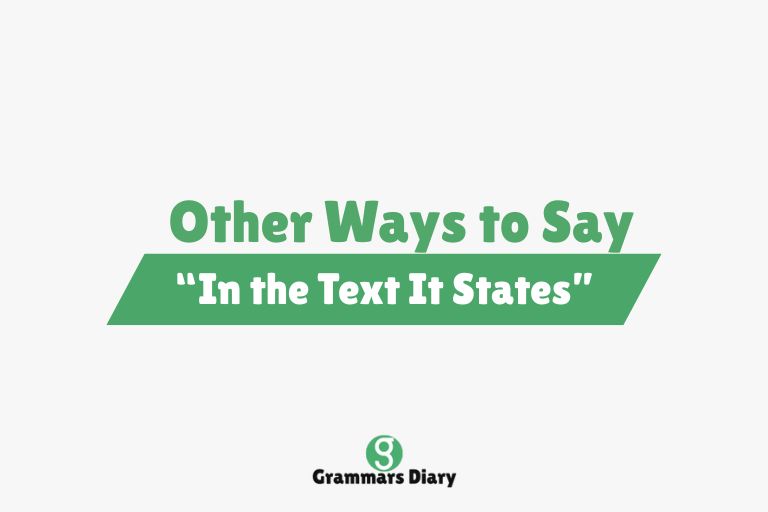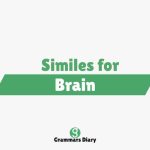“In the text it states” is a phrase often used in academic writing, literary analysis, and educational settings to refer directly to information found within a written source. For instance, when a student writes, “In the text it states that Romeo was deeply in love with Juliet,” they are anchoring their analysis in a direct reference to the material they have read, reinforcing their point with textual evidence.
While clear and functional, this phrase can quickly become repetitive and dull if overused, especially in essays, reports, or presentations that require multiple references to the original material. Fortunately, the English language offers a wide range of alternative expressions that can provide variety and sophistication while preserving clarity and accuracy. This article will explore twenty-one such alternatives, explaining their meanings, ideal usage contexts, and offering example sentences to show how they can be effectively incorporated into academic or formal writing.
Other Ways to Say “In the Text It States”
- According to the text
Example: “According to the text, the author believed that industrial progress was inevitable.”
Meaning: This phrase attributes the information directly to the written source without implying personal interpretation.
Usage: Ideal for summarizing or restating information that comes directly from the passage or material under discussion. - The author states
Example: “The author states that climate change is the most urgent issue of our time.”
Meaning: This alternative shifts the focus from the text itself to the writer, which can feel more personal or analytical.
Usage: Effective when emphasizing the viewpoint or intention of the person who wrote the text. - The passage suggests
Example: “The passage suggests that Gatsby’s wealth could not buy true happiness.”
Meaning: Suggests an interpretation or implication drawn from the reading rather than a direct quotation.
Usage: Best used when discussing inferred or implied ideas rather than explicit facts. - As mentioned in the passage
Example: “As mentioned in the passage, the narrator had a conflicted relationship with her father.”
Meaning: A casual yet clear way to refer back to details or events already introduced in the source text.
Usage: Common in both formal and informal academic writing, especially in literary analysis. - As the text reveals
Example: “As the text reveals, the protagonist is not as honest as he appears.”
Meaning: Highlights the way information becomes evident through the text’s narrative or structure.
Usage: Useful when focusing on insights gradually made clear through reading. - The text illustrates
Example: “The text illustrates the dangers of unchecked ambition through the character of Macbeth.”
Meaning: Emphasizes visual or conceptual demonstration through storytelling or argument.
Usage: Appropriate in analytical writing where examples support a larger thesis or point. - The excerpt explains
Example: “The excerpt explains the process of photosynthesis in detailed steps.”
Meaning: Directly indicates that the text provides a clear explanation or breakdown of information.
Usage: Works well in scientific or instructional contexts. - It is stated in the text
Example: “It is stated in the text that the Civil War caused significant economic changes in the South.”
Meaning: A more formal and passive construction that draws attention to the information itself.
Usage: Suitable for formal essays or summaries where neutrality is preferred. - As written in the text
Example: “As written in the text, the journey represents a metaphor for personal growth.”
Meaning: A simple and elegant way to direct readers to a specific part of the reading material.
Usage: Flexible across academic levels, from student essays to professional writing. - The document indicates
Example: “The document indicates that public opinion was divided at the time.”
Meaning: Suggests that the source provides evidence or signs pointing to a conclusion.
Usage: Common in historical or official contexts where written records are analyzed. - Textual evidence shows
Example: “Textual evidence shows that the character was lying about his whereabouts.”
Meaning: Focuses on the role of evidence in supporting claims or interpretations.
Usage: Ideal for argumentative or persuasive essays where citing evidence is crucial.
- The reading conveys
Example: “The reading conveys a sense of hopelessness experienced by the main character.”
Meaning: Highlights what is emotionally or thematically communicated through the written piece.
Usage: Works well in analytical or thematic discussions, especially in literature and humanities. - As the author points out
Example: “As the author points out, urban poverty is often overlooked in political debates.”
Meaning: Gives credit to the author for making a particular argument or observation.
Usage: Effective in essays or articles where recognizing the author’s voice or argument is key. - As presented in the text
Example: “As presented in the text, the theory relies on empirical data and historical trends.”
Meaning: Emphasizes that the ideas are structured or arranged in a particular way within the material.
Usage: Useful for formal writing, particularly when analyzing the structure or content of a source. - The narrative demonstrates
Example: “The narrative demonstrates how loyalty can be both a virtue and a flaw.”
Meaning: Focuses on how a story or argument models or proves a point through its plot or structure.
Usage: Best used in literature or storytelling contexts where lessons are drawn from events. - The source highlights
Example: “The source highlights the importance of early intervention in education.”
Meaning: Indicates that the original material brings specific attention to an issue or detail.
Usage: Frequently used in research-based or informational writing. - As documented in the text
Example: “As documented in the text, several policies were enacted during that period.”
Meaning: Stresses that information has been formally recorded or stated in the source.
Usage: Often found in historical or scientific contexts involving records, data, or laws. - The material emphasizes
Example: “The material emphasizes the emotional impact of war on civilians.”
Meaning: Draws attention to what the text chooses to stress or focus on.
Usage: Works well in critiques or analytical writing where tone or theme is discussed. - As detailed in the passage
Example: “As detailed in the passage, the protagonist struggled with his dual identity.”
Meaning: Suggests that the information was covered thoroughly or with specificity in the source.
Usage: Best used when referencing elaborate descriptions or well-developed ideas in a passage. - The content reveals
Example: “The content reveals an underlying tension between the two characters.”
Meaning: Focuses on what the text shows or exposes to readers, either explicitly or subtly.
Usage: Versatile and appropriate for both literary and informational writing. - The selection provides
Example: “The selection provides several examples of rhetorical techniques used by the speaker.”
Meaning: Indicates that the text offers useful or relevant examples related to a topic.
Usage: Works well when discussing excerpts, reading comprehension materials, or assigned readings.
When to Use Different “In the Text It States” Alternatives
In Academic Writing
In essays, research papers, or analytical assignments, students and professionals are encouraged to vary their language to demonstrate command of academic vocabulary and to avoid sounding repetitive or overly simplistic. Alternatives such as “the author states,” “textual evidence shows,” or “as documented in the text” convey authority and clarity, helping the writer maintain credibility while building strong arguments grounded in the original material.
In Classroom Discussions
During spoken classroom interactions, whether in primary school or at the university level, expressions like “the passage suggests” or “according to the text” provide students with clear and accessible ways to back up their statements. These alternatives also foster critical thinking by encouraging learners to actively engage with and reflect on what the text communicates.
In Formal Essays and Articles
Writers crafting professional or formal content—such as literary criticism, opinion columns, or historical analysis—can use refined alternatives like “the narrative demonstrates” or “the content reveals” to enhance the sophistication of their expression. These variations also help better align tone and style with audience expectations in formal publications.
Conclusion
While “in the text it states” remains a perfectly functional phrase for citing or referencing written content, relying on it exclusively can make writing feel repetitive, flat, or overly mechanical. Fortunately, there are numerous ways to convey the same idea with more variety, precision, and style—each alternative offering a unique tone, level of formality, or interpretative nuance. By choosing wisely among these alternatives, writers can craft more engaging, expressive, and credible work across academic, professional, or conversational settings.
For those interested in deepening their understanding of synonym usage and formal phrasing, platforms like Thesaurus.com or academic style guides such as APA and MLA offer valuable guidance for selecting the right expression in the right context.
FAQs
What does “in the text it states” mean?
It means that the information or idea being shared comes directly from the written material or passage being referenced.
Is “in the text it states” a formal expression?
While it is commonly accepted in educational settings, it can sound repetitive or simplistic in more advanced or formal writing. Alternatives often provide a better fit depending on tone and audience.
Can I use “the author says” instead?
Yes, “the author says” is a valid alternative, especially in informal discussions, though in formal writing, more precise options like “the author states” or “the author argues” may be preferred.
Why is it important to vary this phrase?
Varying your expressions improves readability, keeps writing engaging, and demonstrates a richer vocabulary—an essential skill in both academic and professional environments.











